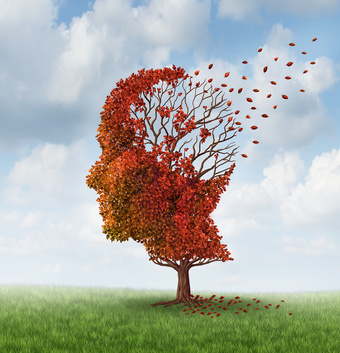How fear makes itself felt
 Every person knows fears and worries. Anxiety manifests itself on various levels, which can be individually quite different. While feelings or thoughts may be at the forefront of one person’s mind, others may experience significant physical changes. Accordingly, the symptoms of anxiety can be quite different. Among other things, a very specific brain area called the amygdala is responsible for emotions. Also called the amygdala, it is responsible for interpreting situations and building our body memory using somatic markers. Already in the womb, the amygdala is fully developed shortly before delivery and learns to warn us of (perceived) threats throughout our lives.
Every person knows fears and worries. Anxiety manifests itself on various levels, which can be individually quite different. While feelings or thoughts may be at the forefront of one person’s mind, others may experience significant physical changes. Accordingly, the symptoms of anxiety can be quite different. Among other things, a very specific brain area called the amygdala is responsible for emotions. Also called the amygdala, it is responsible for interpreting situations and building our body memory using somatic markers. Already in the womb, the amygdala is fully developed shortly before delivery and learns to warn us of (perceived) threats throughout our lives.
Anxiety and its core symptomatology
Basically, symptoms can be differentiated according to mental and physical perceptions.
Enter your headline here
- Fear of loss of control
- Loss of the joy of life
- Fear of falling into aggression or going crazy
- Fear to die
- Feeling that you yourself are not here but far away (depersonalization)
- Feeling that objects are unreal (derealization)
- Feeling of faintness, lightheadedness, weakness, unsteadiness and dizziness
Physical symptoms:
- Gagging, abdominal pain, as well as discomfort and nausea in the stomach area (feeling of restlessness)
- Tingling of the lips, mouth, fingers and skin, as well as numbness
- Shivering, chills, hot flashes
- Fear of a heart attack due to chest pain
- Feeling of tightness or tightness in the chest or throat, difficulty swallowing.
- Suffocation, shortness of breath, shortness of breath
- Decreased ability to perform and concentrate
- Weakness and drowsiness
- Dry mouth
- Coarse or fine beat tremor
- Sweating
- Nightmares and sleep disorders
- Tendency to brood
- palpitations, palpitations or fast as well as irregular heartbeat
The strength of the body's reactions also depends to a large extent on the particular fear reaction. A distinction is made here, for example, between:
- Anxieties and spontaneous panic attacks that occur without situational triggers
- Situational anxiety or panic attacks whose onset depends on confrontation with a specific trigger or stimulus
- Situational anxiety or panic attacks that, although not always associated with a particular stimulus, are more likely to occur when confronted with it
Fear extends to different levels
A specific area of the brain, the so-called amygdala, is responsible for the development and maintenance of the individual symptoms.
The amygdala controls feelings and emotions and sets in motion thought processes that can result in fear-driven bodily reactions in unpleasant situations. Feelings and thoughts (subjective level) are closely linked to the physical changes (objective level). Negative experiences often lead to a feeling of abandonment and helplessness via a recurring thought pattern. In such cases, the amygdala usually controls the release of stress hormones, which in turn influence behavior (motor component).
This results in fight or flight reactions, panic-like behavior patterns, or even avoidance reactions. Anxiety, as an emotion with sometimes extreme physical sensations, feels like a disease; but it doesn’t have to be. Whether ultimately the anxiety symptomatology is indicative of pathological anxiety must be determined separately.
More about fear as a disease

When fear becomes a disease
Anxiety: normal reaction or already pathological? Even though fear has tangible, warning, and even spurring benefits in many situations, it is always perceived as unpleasant by those affected. When an

When fear becomes a disease
Anxiety: normal reaction or already pathological? Even though fear has tangible, warning, and even spurring benefits in many situations, it is always perceived as unpleasant by those affected. When an










